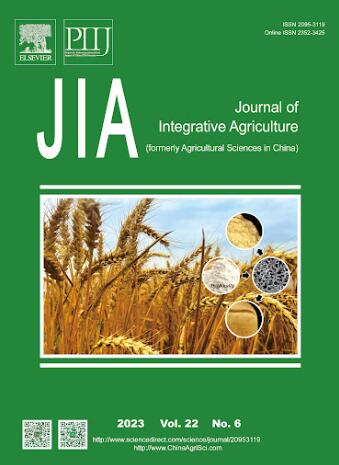Low-fat microwaved peanut snacks production: Effect of defatting treatment on structural characteristics, texture, color, and nutrition
IF 4.4
1区 农林科学
Q1 AGRICULTURE, MULTIDISCIPLINARY
引用次数: 0
Abstract
This study develops low-fat microwaved peanut snacks (LMPS) using partially defatted peanuts (PDP) with different defatting ratios, catering to people’s pursuit of healthy, low-fat cuisine. The effects of defatting treatment on the structural characteristics, texture, color, and nutrient composition of LMPS were comprehensively explored. The structural characteristics of LMPS were characterized using X-ray micro-computed tomography (Micro-CT) and scanning electron microscope (SEM). The results demonstrated that the porosity, pore number, pore volume, brightness, brittleness, protein content, and total sugar content of LMPS all significantly increased (<0.05) with the increase in the defatting ratio. At the micro level, porous structure, cell wall rupture, and loss of intracellular material could be observed in LMPS after defatting treatments. LMPS made from PDP with a defatting ratio of 64.44% had the highest internal pore structural parameters (porosity 59%, pore number 85.3×10, pore volume 68.23 mm), the brightest color (L* 78.39±0.39), the best brittleness (3.64±0.21) mm), and the best nutrition (high protein content, (34.02±0.38)%; high total sugar content, (17.45±0.59)%; low-fat content, (27.58±0.85)%). The study provides a theoretical basis for the quality improvement of LMPS.低脂微波花生点心的生产:脱脂处理对结构特征、口感、色泽和营养的影响
本研究利用不同脱脂比例的部分脱脂花生(PDP)开发了低脂微波花生零食(LMPS),以迎合人们对健康、低脂美食的追求。该研究全面探讨了脱脂处理对 LMPS 的结构特征、质地、颜色和营养成分的影响。利用 X 射线显微计算机断层扫描(Micro-CT)和扫描电子显微镜(SEM)对 LMPS 的结构特征进行了表征。结果表明,随着脱脂率的增加,LMPS 的孔隙率、孔数量、孔体积、亮度、脆性、蛋白质含量和总糖含量均显著增加(<0.05)。在微观层面上,脱脂处理后的 LMPS 可以观察到多孔结构、细胞壁破裂和细胞内物质流失。脱脂率为 64.44% 的 PDP 制成的 LMPS 具有最高的内部孔隙结构参数(孔隙率 59%,孔数 85.3×10,孔体积 68.23 mm)、最明亮的颜色(L* 78.39±0.39),脆性最好(3.64±0.21)mm),营养最好(蛋白质含量高,(34.02±0.38)%;总糖含量高,(17.45±0.59)%;脂肪含量低,(27.58±0.85)%)。该研究为提高 LMPS 的质量提供了理论依据。
本文章由计算机程序翻译,如有差异,请以英文原文为准。
求助全文
约1分钟内获得全文
求助全文
来源期刊

Journal of Integrative Agriculture
AGRICULTURE, MULTIDISCIPLINARY-
CiteScore
7.90
自引率
4.20%
发文量
4817
审稿时长
3-6 weeks
期刊介绍:
Journal of Integrative Agriculture publishes manuscripts in the categories of Commentary, Review, Research Article, Letter and Short Communication, focusing on the core subjects: Crop Genetics & Breeding, Germplasm Resources, Physiology, Biochemistry, Cultivation, Tillage, Plant Protection, Animal Science, Veterinary Science, Soil and Fertilization, Irrigation, Plant Nutrition, Agro-Environment & Ecology, Bio-material and Bio-energy, Food Science, Agricultural Economics and Management, Agricultural Information Science.
 求助内容:
求助内容: 应助结果提醒方式:
应助结果提醒方式:


